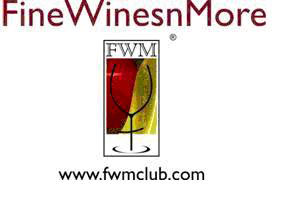The Australian wine industry has been on this roller coaster ride for the last three decades with a very successful past but wine glut during the past decade is a matter of concern. However, the resilience and innovativeness of the industry will bring Australia back to the top, writes Dan Traucki from Australia with a message of optimism for the Indian wine industry.
To understand the present status of the Australian wine industry and to predict where it is headed, it is necessary to look back over the last few decades. The 1980s started out in a promising fashion with good wine sales and a rapidly growing interest in wine within Australia as the nation’s palate lifted from the sweet and often fizzy wines that had been the normal. However, by the mid 1980s sales had slowed to such an extent that the infamous “Vine Pull” Scheme was introduced in South Australia in order to reduce the acreage under vine to more closely match the demand for wine.
Unfortunately this resulted in the removal of many very old patches of Riesling, Grenache and Shiraz vines, which in less than a decade later would be in massive demand.
The Glorious Eighties
 In the latter part of the 1980s the Australian wine industry started a big export push towards the U.K. lead by companies such as Orlando Wines with their Jacob’s Creek brand. As this move began to succeed, more and more winemakers hopped on the aeroplanes to UK to pedal their wares. This was very successful for Australia and eventually in the early 2000s Australia became the largest supplier of wine to Britain. In the latter part of the 1980s the Australian wine industry started a big export push towards the U.K. lead by companies such as Orlando Wines with their Jacob’s Creek brand. As this move began to succeed, more and more winemakers hopped on the aeroplanes to UK to pedal their wares. This was very successful for Australia and eventually in the early 2000s Australia became the largest supplier of wine to Britain.
In time, this success led to significant increases in sales to many European countries.
The next major development was when the 1990 Penfolds Grange was selected as the wine of the year by America’s massively influential, Wine Spectator Magazine. This generated significant interest in Australian wines in the US. Whilst one or two companies such as Rosemount had great success, most found the ride in the “land of the free” significantly harder due to their plethora of regulations and the 3 tier system of alcohol distribution. As this was occurring, Robert Parker (US Wine God) also took a shine to Australian wine and the sales soared.
This new found publicity not only generated sales in the USA, but also in many other parts of the world as both Wine Spectator and Parker’s influence on the wine world rose dramatically. Sales boomed in the UK, Europe and interest started in many Asia countries.
By the mid 1990s there weren’t enough vines planted in Australia to meet demand. This was the time when Australia had to import bulk red wine from South America & South Africa to fill the demand for cask (bag in box) wine within Australia.
At the same time Australia’s government introduced tax incentives to encourage people to invest in new vineyards and vine planting took off at a frenetic pace. Within 2-3 year this lead to a huge investment in wineries so as to be able to handle the rapidly growing grape tonnage.
At the start of the 21st Century the Australian wine industry was glowing with pride and busy patting itself on the back. But there were some early signs that more troubling times lay ahead. Too much Chardonnay had been planted in the 1990s and a big surplus was looming at the same time that the drinking public were falling in love with New Zealand Sauvignon Blanc. Too many acres of vineyards were being planted by investment companies with no long term contracts for the grapes and the alarm bells started to ring in some quarters.
Had the Australian Government removed the tax incentives at this stage all would have still been well, but alas they left them in place for about 3-4 years to long and many grape growing areas such as the Barossa saw massive increases in their areas under vine.
The wine glut was temporarily eased by the advent of the Yellow Tail wine brand which in spectacular fashion went from zero to hero in a very short space of time. Many people at the time regarded Yellow Tail as the saviour of the wine industry as they absorbed significant amounts of wine which would have otherwise sat in the “wine lake”.
Glut in Recent Past
Throughout the last decade the production of wine grew faster than sales of wine, as more and more new vineyards came on stream. Then finally in the middle of the decade it started to hit home that we had grown too fast and furious. When I started my wine consultancy business in 2001 there were 1,287 wineries/wine companies in Australia; today, at last count that number was 2,500. Doubled in one decade!
Looking to the future, most of the big companies are currently “hunkering down” by cancelling grower contracts, selling vineyards and wineries, so that many of the “little guys” are hurting even more. When one of the big brands drops 10% in sales this often equates to more wine than all the wineries in one of the smaller wine areas produce. The big guys have a much greater capacity to sell below cost and absorb the losses than the small “Mum & Dad” wine producers and so many of the smaller producers are going broke.
Good News for Future
On the other hand, the good news is that the Australian wine industry is incredibly resilient, innovative and energetic. We have gone from being almost unknown globally 30 years ago to being in the top 3 imported wine suppliers in most of our customer markets, including being number one in quite a few of these markets.
Today, there are a considerable number of wineries experimenting with new grape varieties so as to be able to offer the world new and exciting tastes in keeping with the world’s ever changing palate.
The next few years will be a period of consolidation at the end of which the industry will come out “leaner and meaner” and offering a much more diversified range of world class wines. The transition has started and it is only a matter of time before the world sees a revitalised and even more dynamic Australian wine industry.
Message for Indian Industry
The message here for India is twofold. Firstly, your wine industry will go through cycles of ups and downs, with changes in local demand, tax rules, export opportunities etc but providing they are flexible, innovative and you support them, they will be very successful as we here in Australia have been. I look forward to trying good Indian wines in my local Indian restaurant here in Adelaide.
The second message is, please try Australian wines; they are really exciting and delicious.
Dan Traucki
 Dan Traucki is the principal of Wine Assist Pty Ltd, wine industry logistics and marketing consultancy. He started out as an accountant before joining the wine industry 21 years ago. His involvement during that time has included strategic positions of general manager of a medium-sized winery and chief executive officer of a smaller winery. Dan can be contacted on+61 8 8382 4920 (phone/fax), +61408 801 795 (Mob) or at wineassist@wineassist.com.au Dan Traucki is the principal of Wine Assist Pty Ltd, wine industry logistics and marketing consultancy. He started out as an accountant before joining the wine industry 21 years ago. His involvement during that time has included strategic positions of general manager of a medium-sized winery and chief executive officer of a smaller winery. Dan can be contacted on+61 8 8382 4920 (phone/fax), +61408 801 795 (Mob) or at wineassist@wineassist.com.au
|